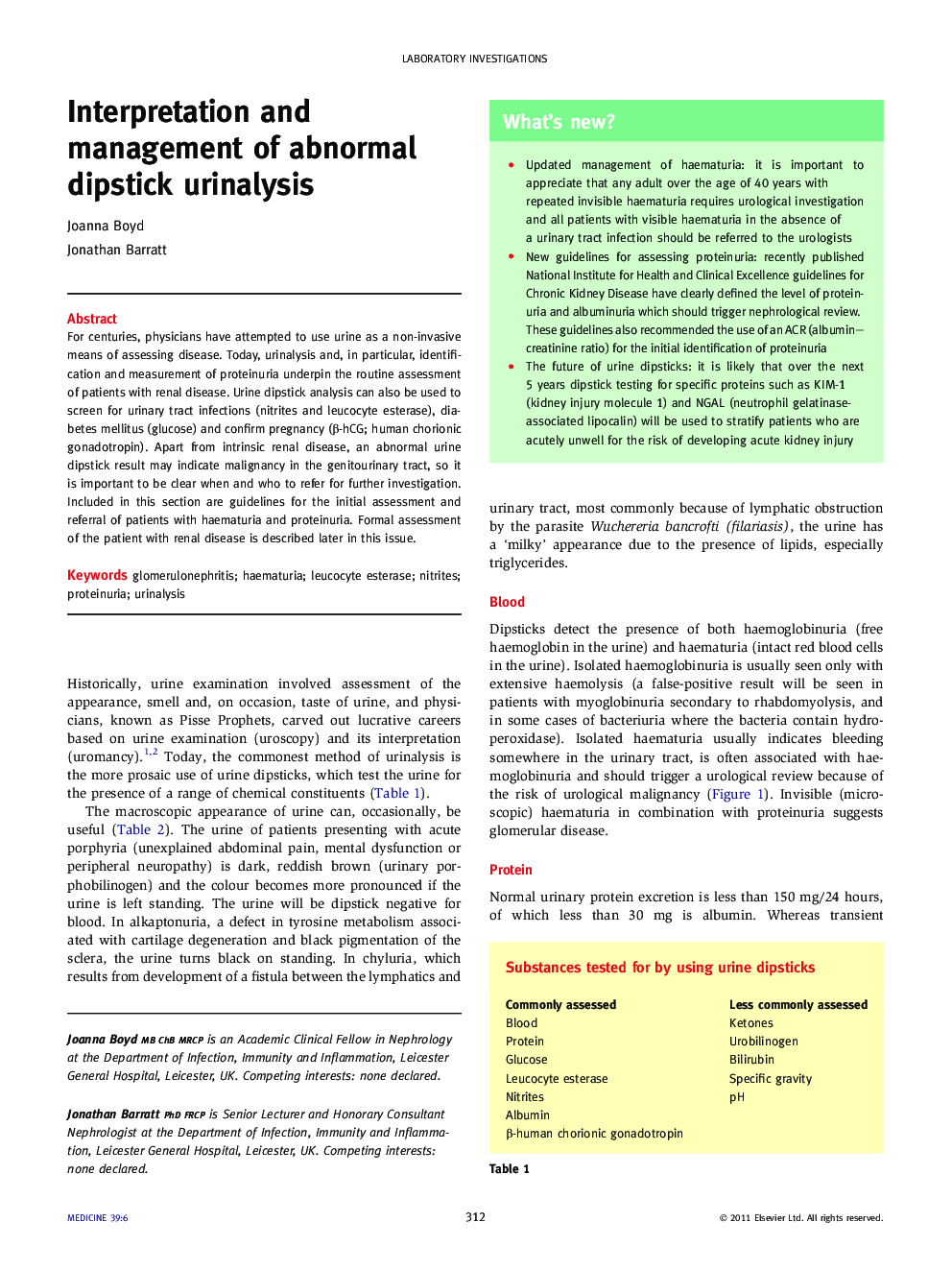| Article ID | Journal | Published Year | Pages | File Type |
|---|---|---|---|---|
| 3804152 | Medicine | 2011 | 5 Pages |
For centuries, physicians have attempted to use urine as a non-invasive means of assessing disease. Today, urinalysis and, in particular, identification and measurement of proteinuria underpin the routine assessment of patients with renal disease. Urine dipstick analysis can also be used to screen for urinary tract infections (nitrites and leucocyte esterase), diabetes mellitus (glucose) and confirm pregnancy (β-hCG; human chorionic gonadotropin). Apart from intrinsic renal disease, an abnormal urine dipstick result may indicate malignancy in the genitourinary tract, so it is important to be clear when and who to refer for further investigation. Included in this section are guidelines for the initial assessment and referral of patients with haematuria and proteinuria. Formal assessment of the patient with renal disease is described later in this issue.
